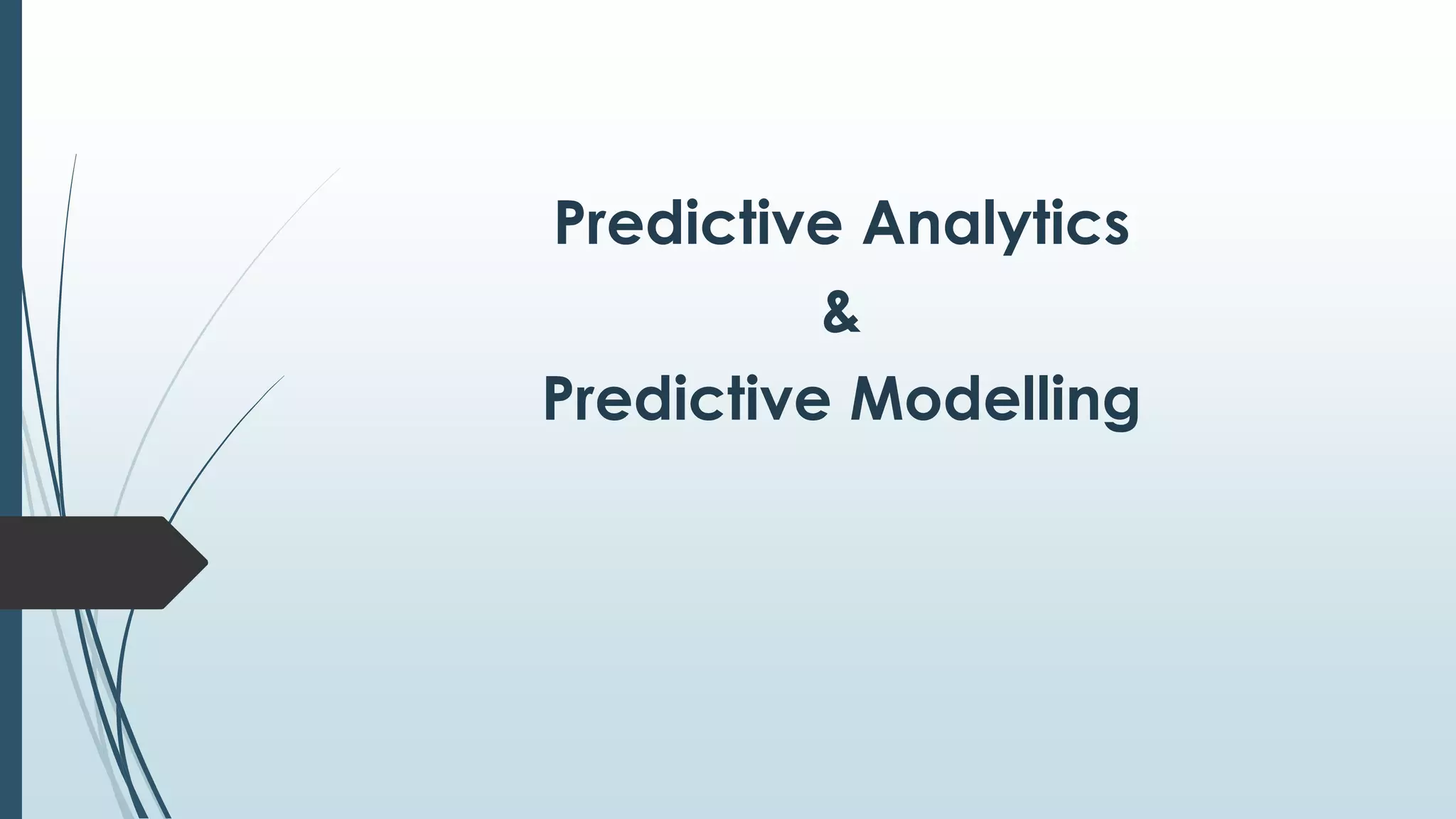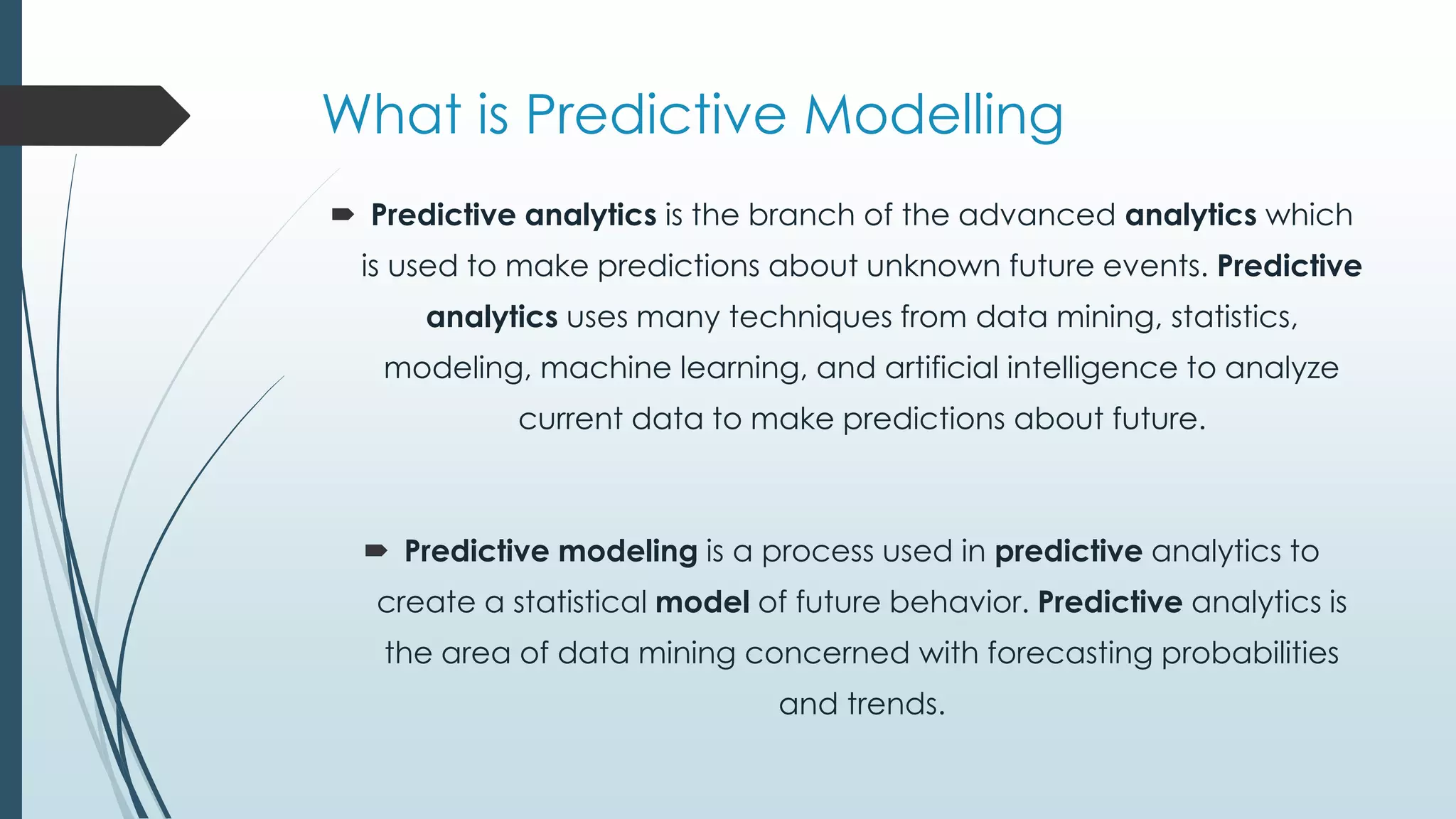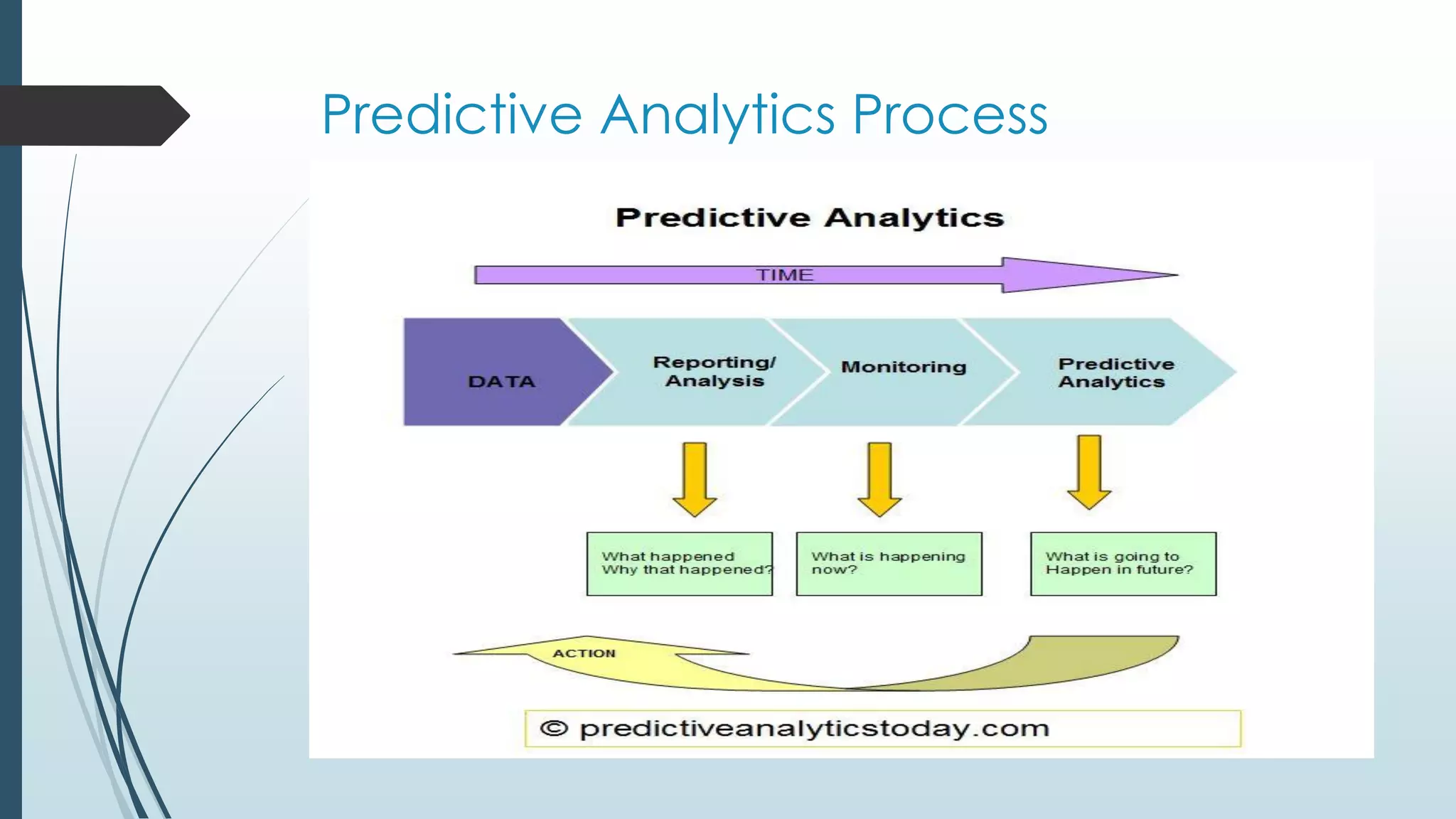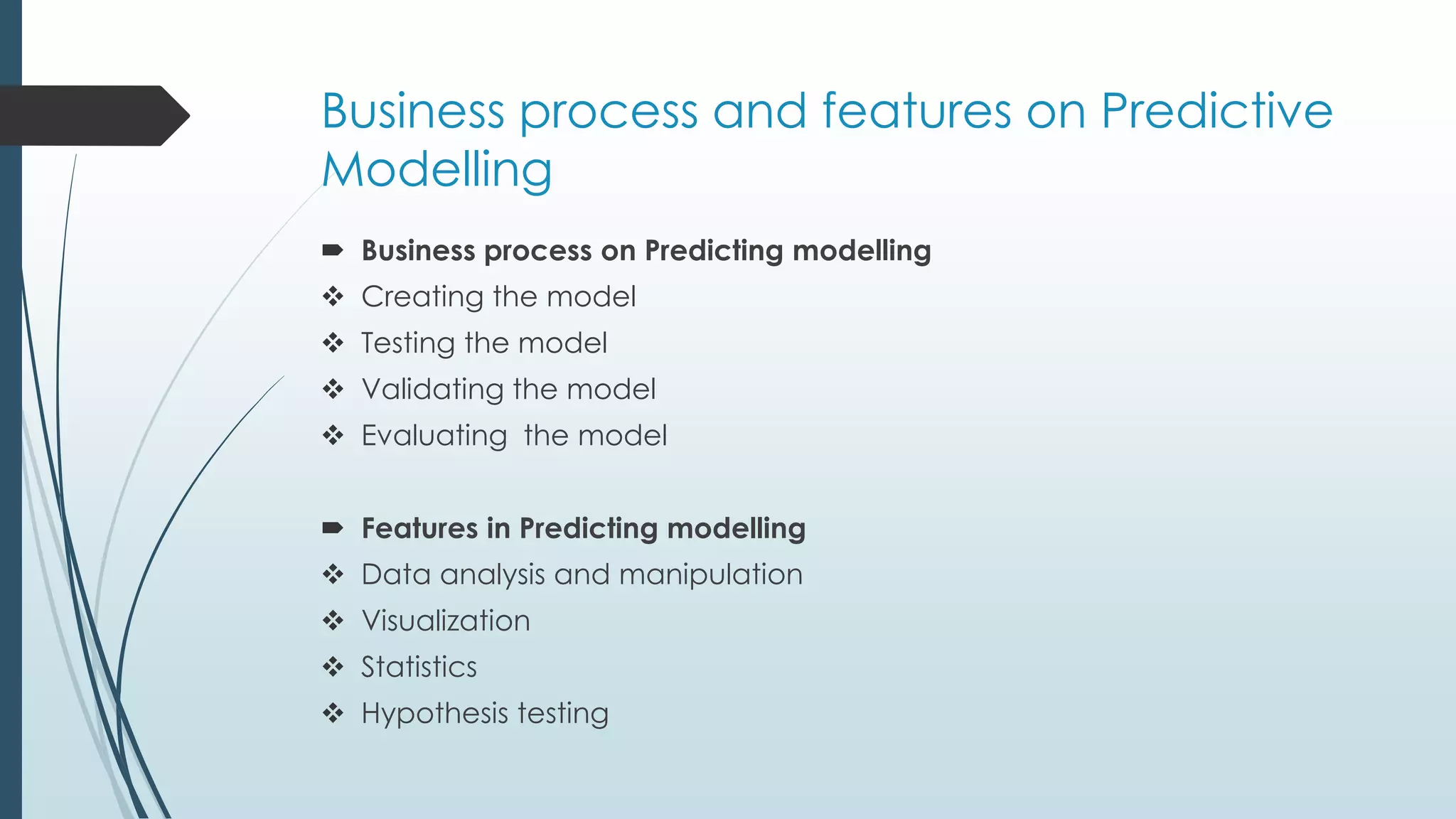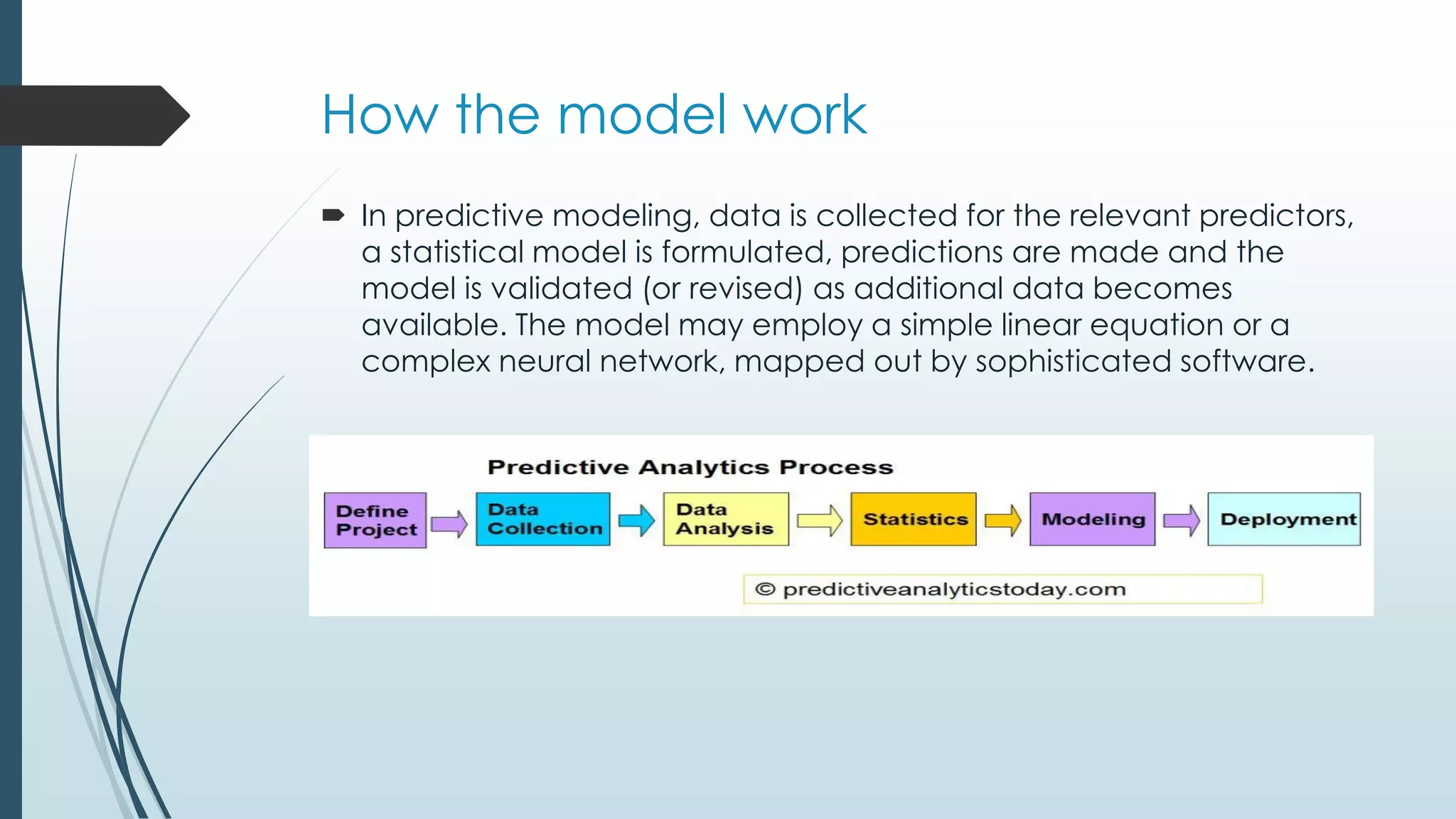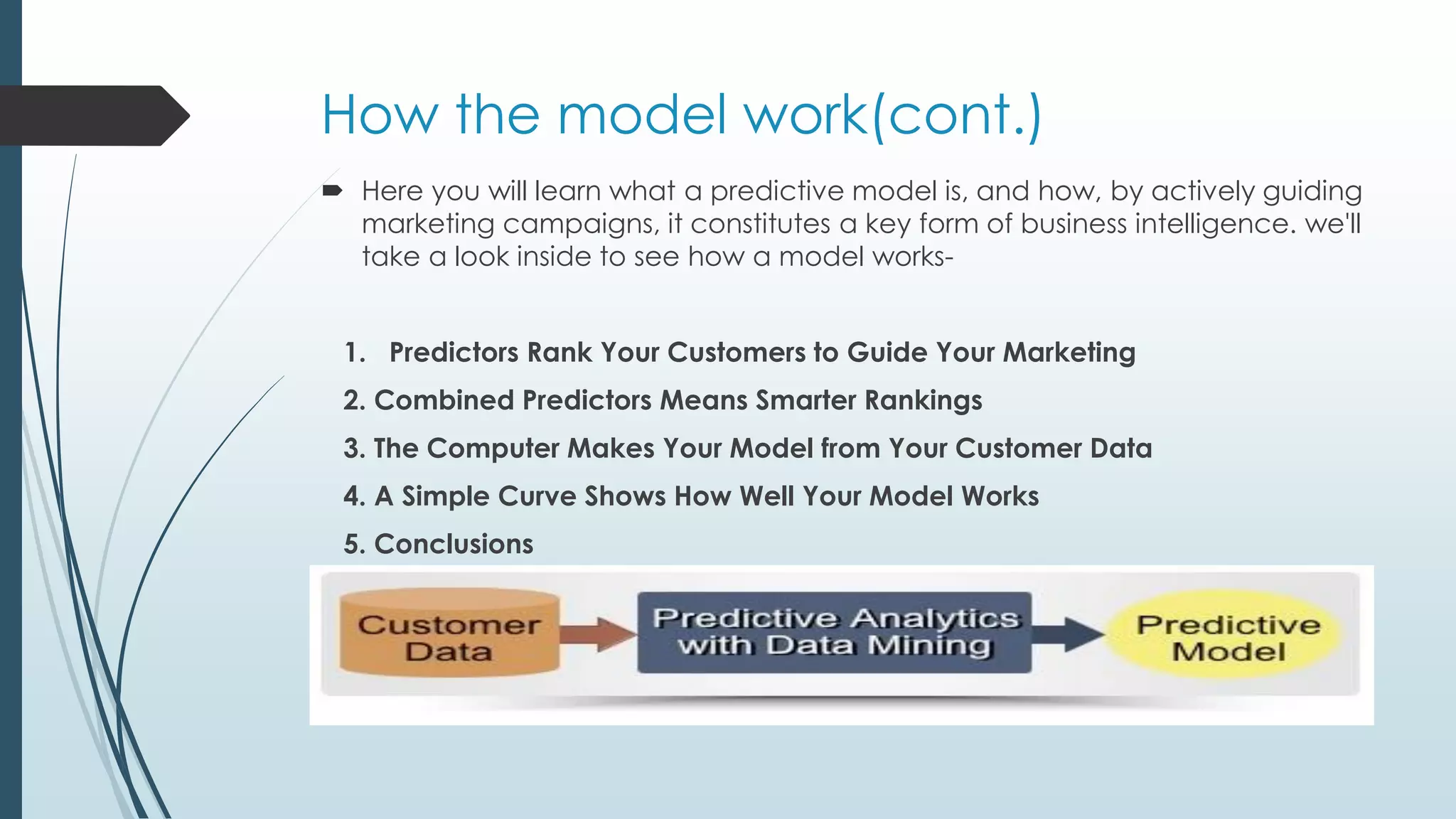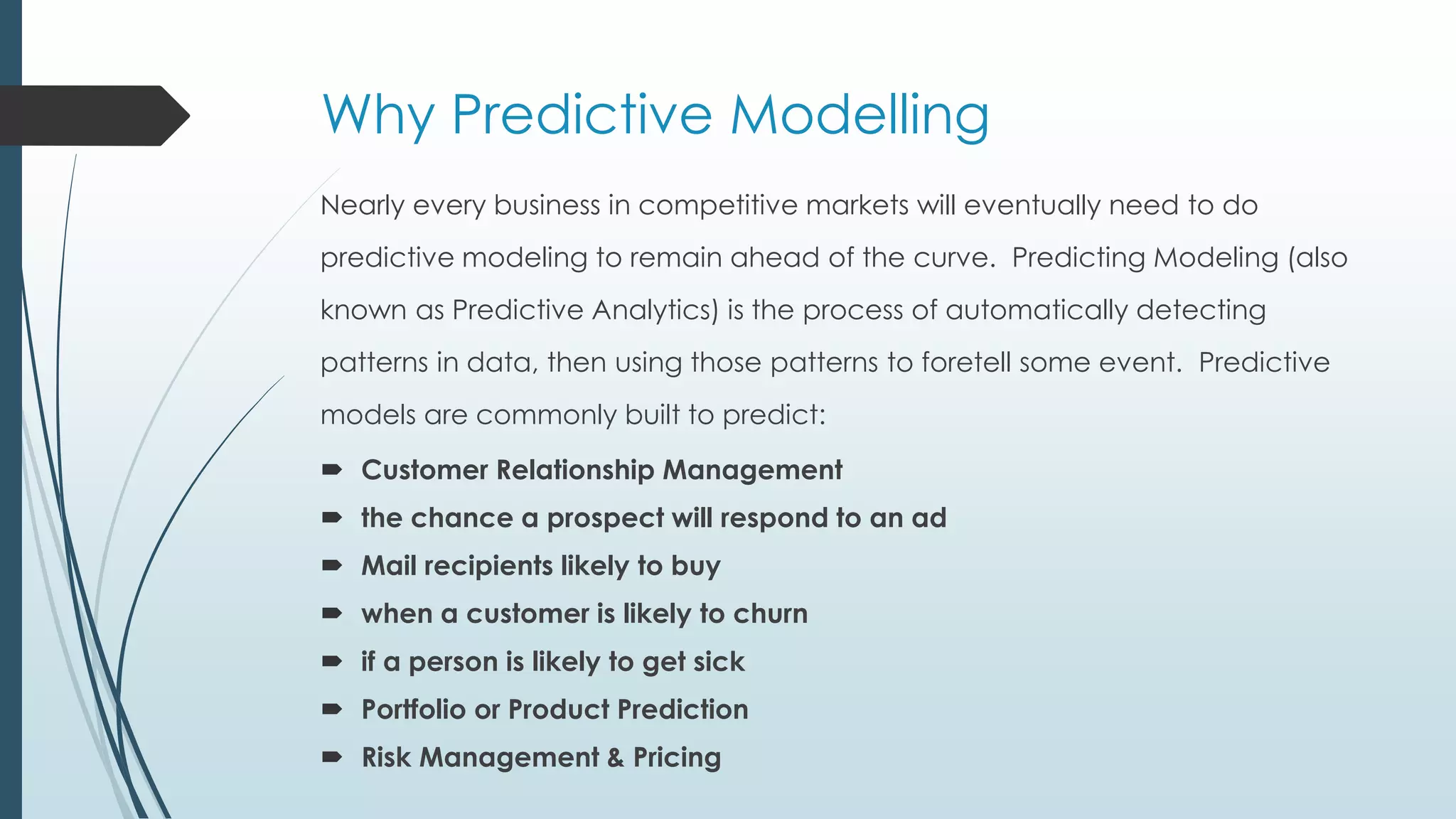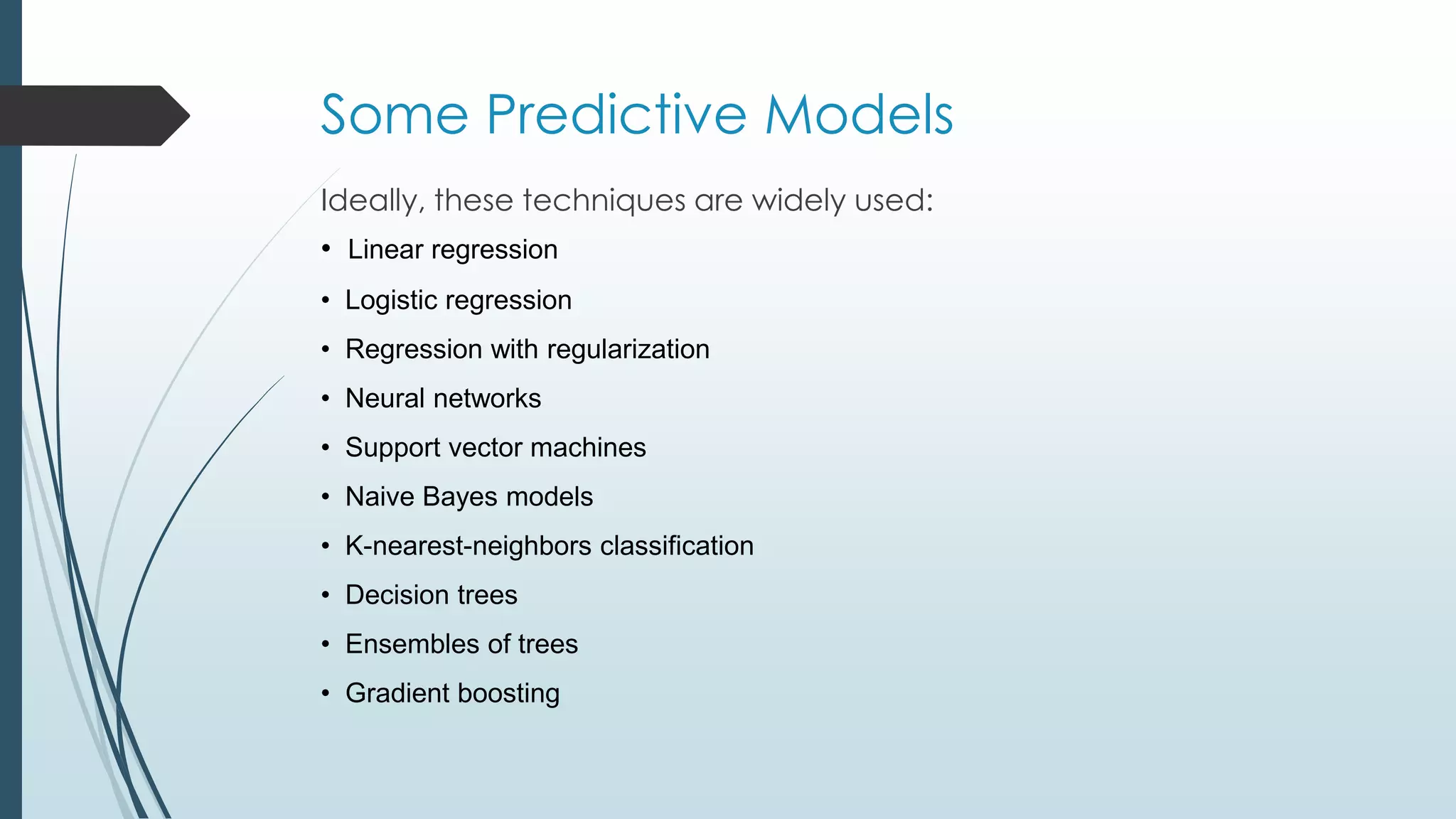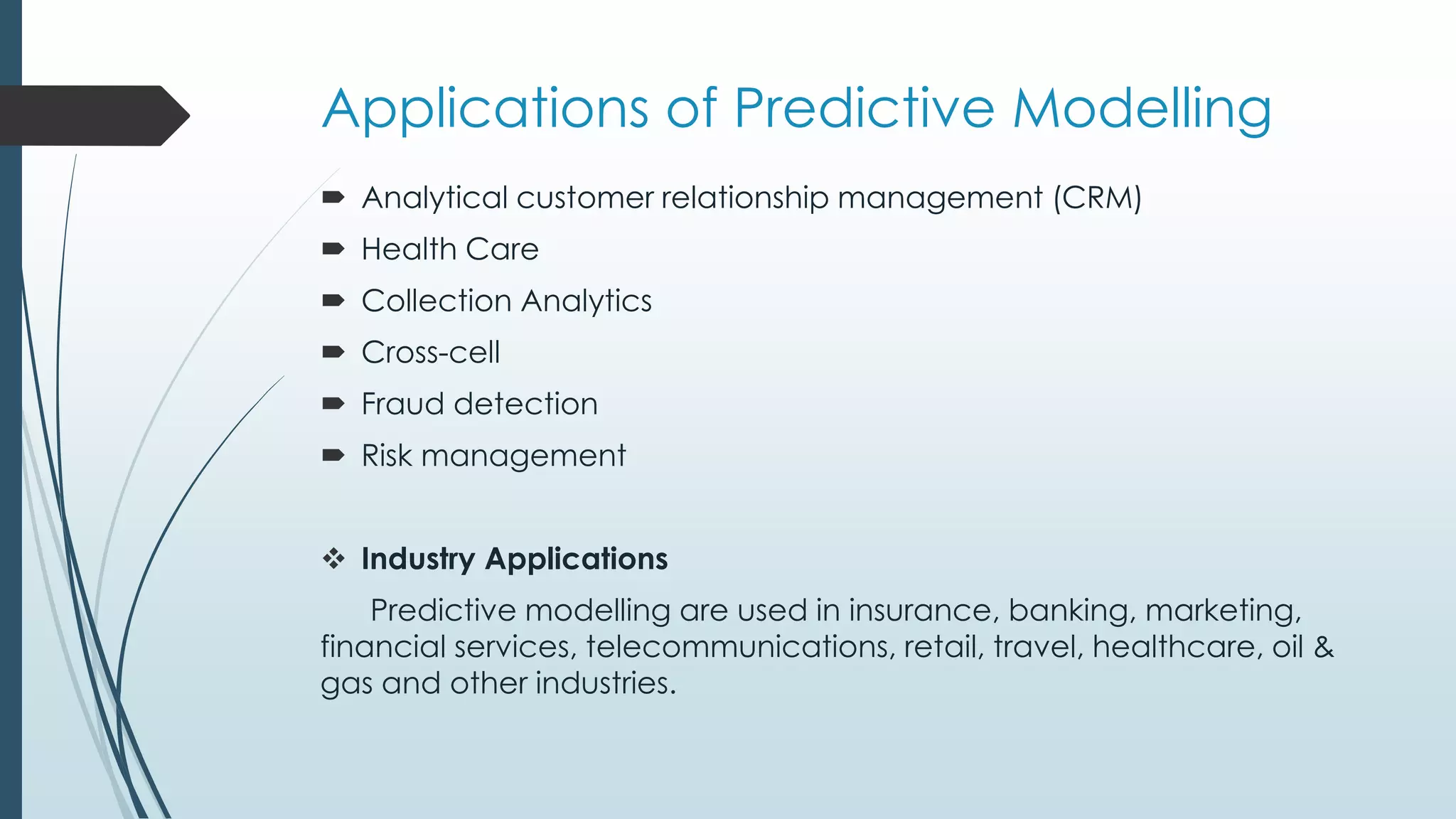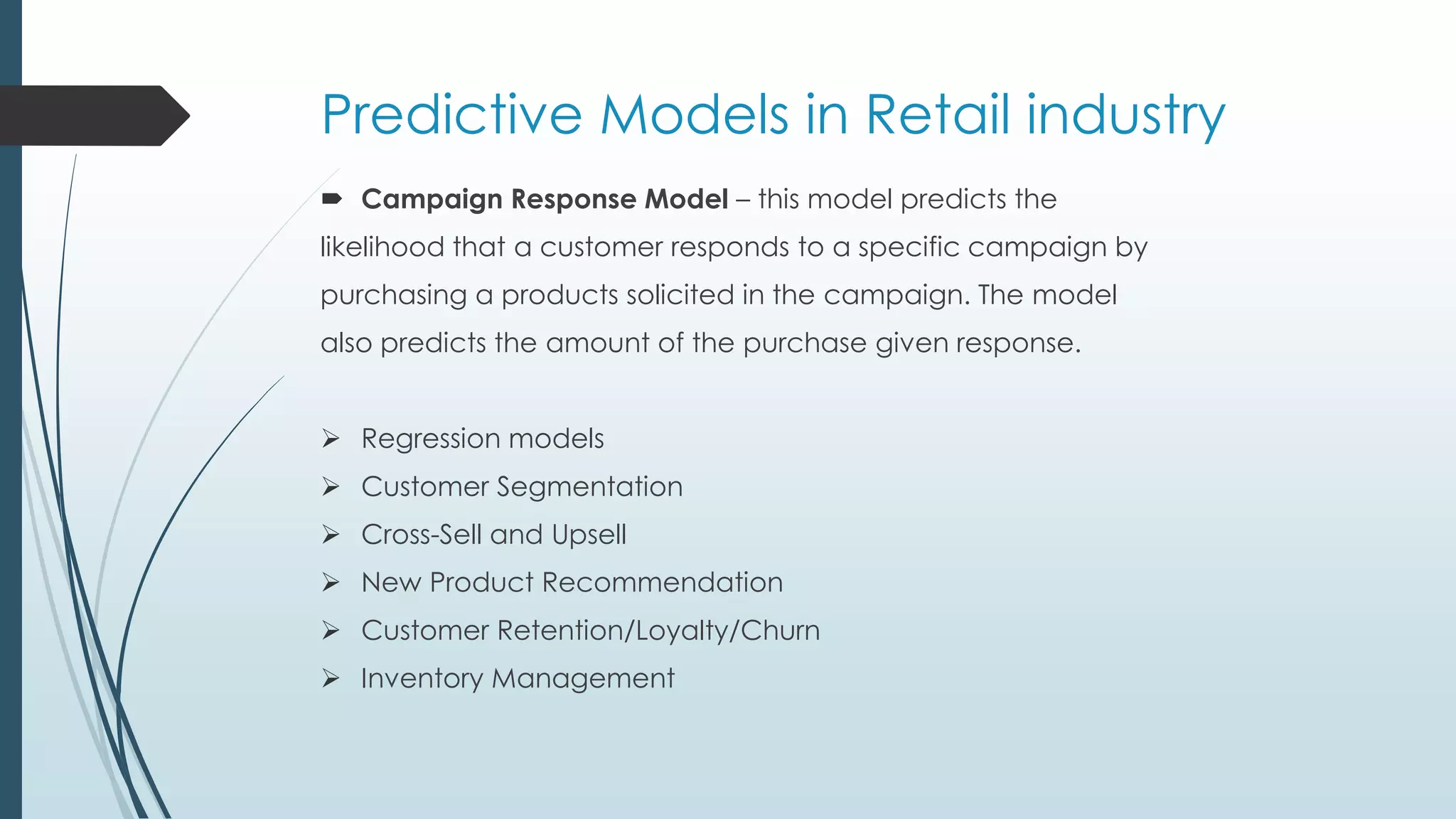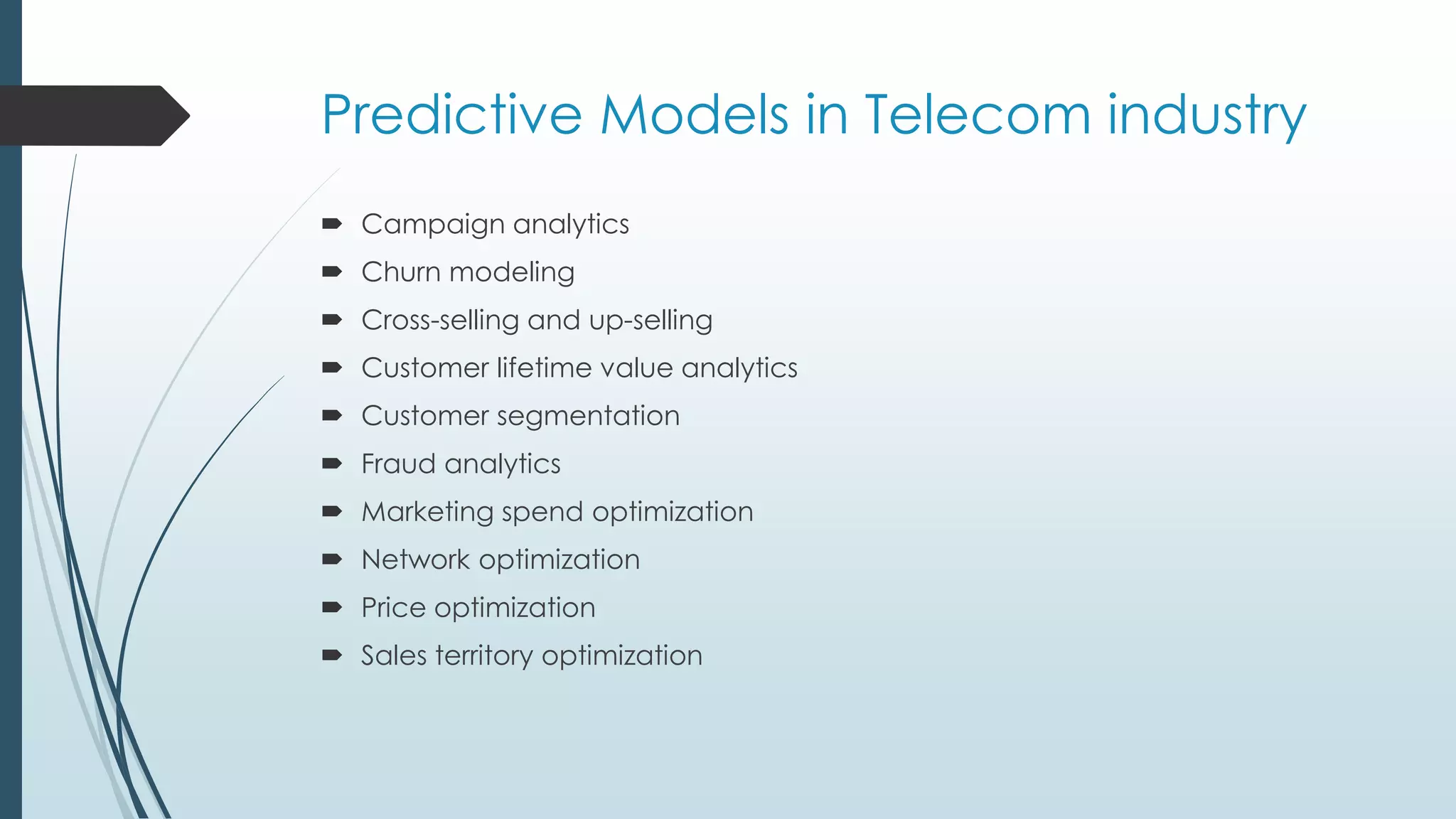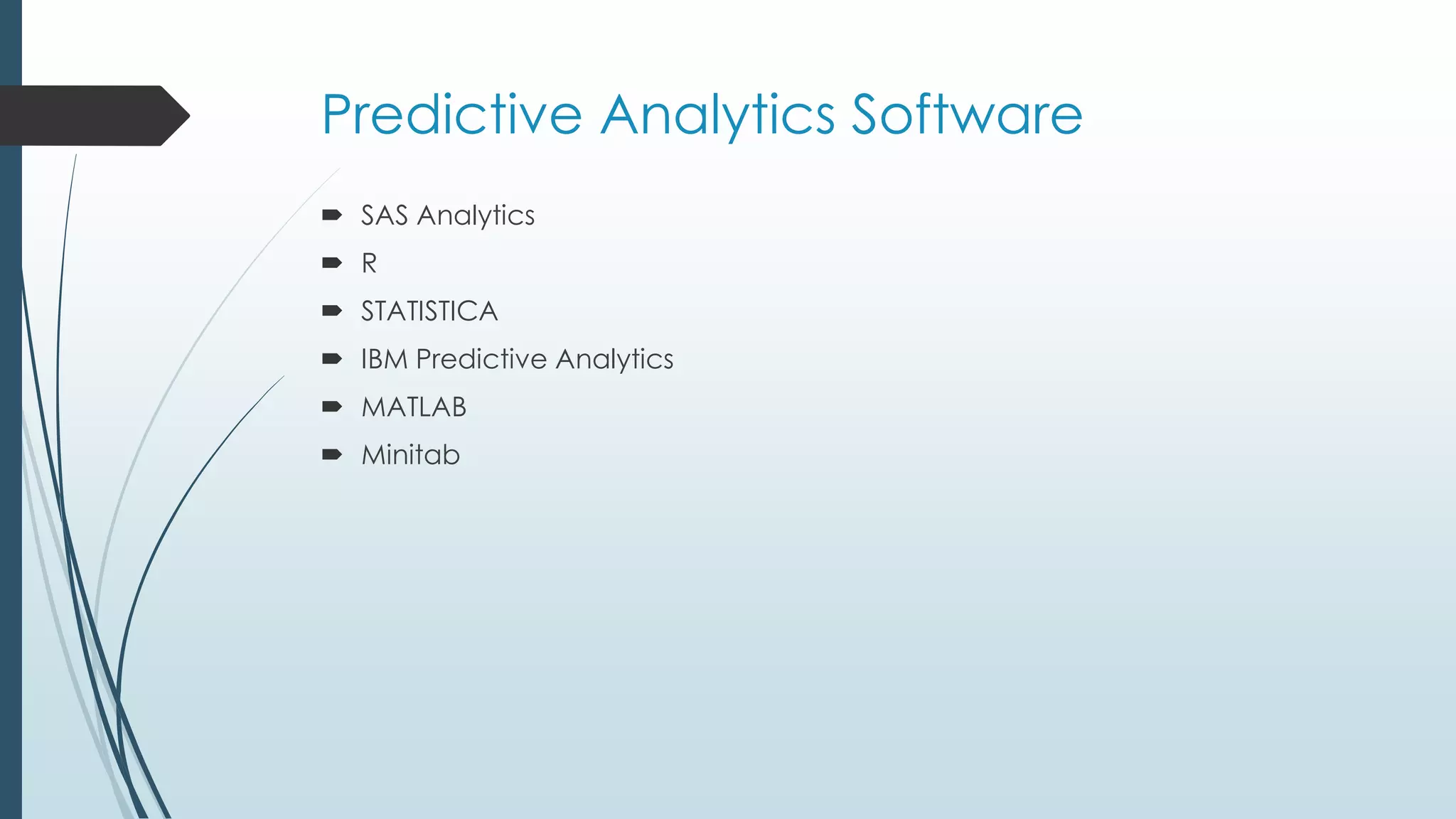Predictive modeling is a process used in predictive analytics to create statistical models that can forecast future outcomes based on historical data. Predictive modeling uses techniques from data mining, statistics, and machine learning to analyze current data to make predictions. The predictive modeling process involves collecting data, creating a model, testing and validating the model, and evaluating the model's performance. Predictive models are commonly used to predict customer behavior, risk levels, product performance, and more. Industries like retail, healthcare, finance, and telecommunications frequently use predictive modeling techniques.
